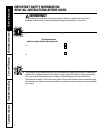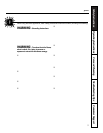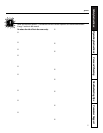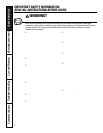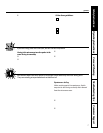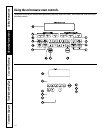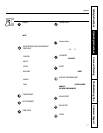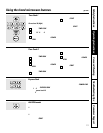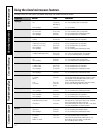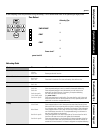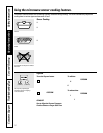
Superheated liquid will bubble up out of the
cup when it is moved or when something
like a spoon or tea bag is put into it.
To prevent this from happening and causing
injury, do not heat any liquid for more than
2 minutes per cup.
After heating, let the cup stand in the
microwave for 30 seconds before moving it
or putting anything into it.
Spontaneous boiling
Under certain special circumstances, liquids
may start to boil during or shortly after removal
from the microwave oven.
To prevent burns from splashing liquid, we
recommend the following before removing
the container from the oven:
■ Allow the container to stand in the oven
for 30 to 40 seconds after the oven has
shut off.
■ Do not boil liquids in narrow-necked
containers such as soft drink bottles, wine
flasks and especially narrow-necked coffee
cups. Even if the container is opened,
excessive steam can build up and cause it
to burst or overflow.
Safety Instructions Operating Instructions Care and Cleaning Troubleshooting Tips
Consumer Support
7
ge.com
If you see arcing, press the CLEAR/OFF pad and correct the problem.
ARCING
Arcing is the microwave term for sparks in the
oven. Arcing is caused by:
■ Metal or foil touching the side of the oven.
■ Foil not molded to food (upturned edges
act like antennas).
■ Metal, such as twist-ties, poultry pins or
gold-rimmed dishes, in the microwave.
■ Recycled paper towels containing small
metal pieces being used in the microwave.
■ Plastic cookware – Plastic cookware
designed for microwave cooking is very
useful, but should be used carefully.
Even microwave-safe plastic may not
be as tolerant of overcooking conditions
as are glass or ceramic materials and
may soften or char if subjected to short
periods of overcooking. In longer
exposures to overcooking, the food
and cookware could ignite.
■ Follow these guidelines:
■ Use microwave-safe plastics only and
use them in strict compliance with
the cookware manufacturer’s
recommendations.
■ Do not microwave empty containers.
■ Do not permit children to use
plastic cookware without complete
supervision.
Microwaved water and other liquids do not always bubble when they reach the boiling point.
They can actually get superheated and not bubble at all.
SUPERHEATED WATER




